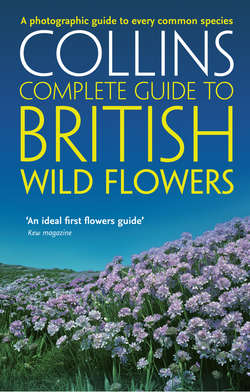Читать книгу British Wild Flowers: A photographic guide to every common species - Paul Sterry - Страница 14
ОглавлениеCONSERVATION
WORKING ON THIS PROJECT gave me the opportunity to visit many wonderful botanical locations across our region, the best of which are protected, to a degree, by nature reserve status and hence are still in good order. I also revisited many unprotected wayside botanical sites that I had not seen for several years. Sadly, most had become botanically impoverished and some had even lost the special plants for which they had been known. It will come as no surprise to learn that the majority of these sites were on areas of farmland.
WHAT’S GONE WRONG?
Threats to the countryside are all too obvious these days: the swallowing of land for housing, road schemes and the like, industrial and domestic pollution, and above all changes in agricultural practices – namely the unquestioning use of ever-more ‘efficient’ herbicides since the 1950s. And problems for wild flowers in the countryside do not stop with farming. Many landowners view the land they own as something to be exploited, if not for economic gain then as a playground, without a thought for conservation.
It has come to something when the discovery of Spreading Hedge-parsley, once a widespread arable ‘weed’, is a cause for botanical celebration. Without changes in agricultural practices, species such as this – already extinct at a local level in many areas – could disappear from Britain completely.
WHAT CAN BE DONE?
Legislation and agricultural grants relating to the way the countryside is managed need to target wildlife more intelligently than is currently the case, and development and change of land use should be subject to as much restriction as exists in the world of town planning. Easy to say, but much harder to put into practice. And there seems little cause for optimism, given that statutory bodies commanded with the responsibility for nature conservation are funded by government, itself perceived as being more receptive to economic than to environmental lobbies.
WHAT CAN YOU DO?
Object to, and oppose, all major development in the countryside and support organisations that are critical of the way intensive farming and insidious urbanisation have changed the botanical face of the landscape. On a small scale, grow as much of your own food as you can, garden organically, and use local organic sources for your additional needs whenever possible. Another way that the individual can help safeguard the British countryside is to donate as much money as possible to conservation organisations for the purchase of land to remove it from the threat of intensive farming or development. Suitable recipients of donations would include organisations such as Plantlife International, the various county Wildlife Trusts, the Woodland Trust, the National Trust and the RSPB.
Although walks in the countryside sometimes induce a sense of gloomy pessimism, budding botanists should not despair. Remarkably few flowering plant species have been lost entirely from Britain and Ireland in the last century and there are still plenty of wonderful botanically rich locations around the country. Nature reserves are thriving and, with your support and enthusiasm, things can only get better.
Thankfully, it is still possible to find agricultural fields where Cornflowers and other arable weeds thrive alongside the desired crop plant, either by design or where non-intensive farming methods are used. Let us hope that sights such as this become more commonplace as enlightenment, or financial inducements, change the way some of the land is farmed.
